Black River Technical College’s accreditation events over the past decade have served as excellent experiential learning opportunities in accreditation-related matters. Through these opportunities, BRTC faculty, staff, and administration have learned what processes, procedures, and approaches tend to lead to the best accreditation outcomes (as well as those that do not!). The information provided on this page is designed to assist institutions as they navigate mid-cycle and comprehensive reviews. Ideally, institutions will begin planning for these reviews at least three years in advance. The 3-year timeline below describes the recommended activities that should be completed each year leading up to a mid-cycle or comprehensive review.
3-Year Prep Timeline
3 Years Out
- Develop a plan for composing the Assurance Argument
- Develop criterion teams
- Provide training
- Teams begin gathering evidence
- Identify a primary author
- Begin first draft, with the goal of completing a draft of three criteria
- Develop criterion teams
- Establish a Federal Compliance Team
- Provide training
- Assign specific responsibilities
2 Years Out
- Complete first draft of remaining criteria
- Begin second draft, adding in additional evidence gained from criterion teams
- Federal Compliance Team meetings
1 Year Out
- Final Assurance Argument review
- By senior administration
- By faculty and staff
- Complete Federal Compliance documents
- Plan campus-wide preparation (see timeline below)

1-Year Prep Timeline
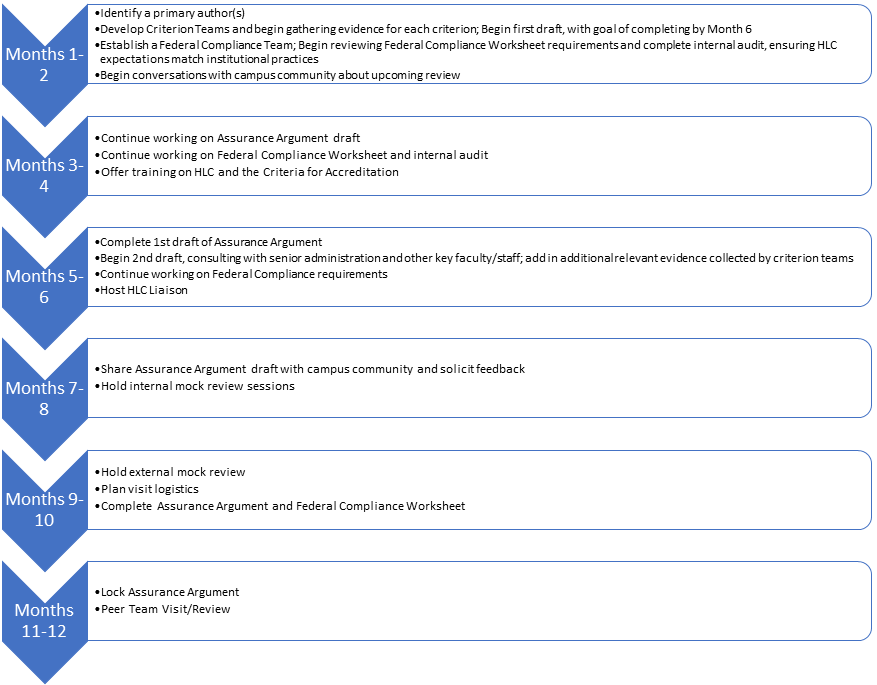
An institution’s LMS can serve as an effective training tool and repository for information leading up to an accreditation review. BRTC established an “HLC Training” course in Moodle and enrolled all faculty and staff. The accordion below contains screenshots of BRTC’s HLC training course. Specific training documents and resources are available under Resources.
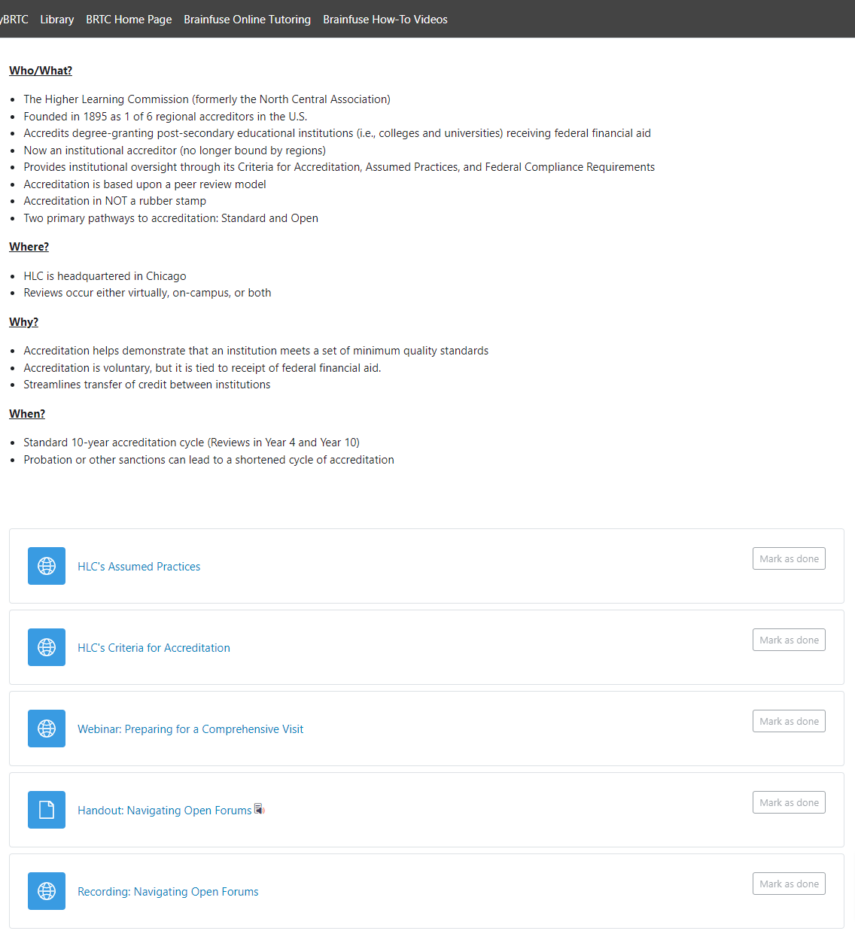
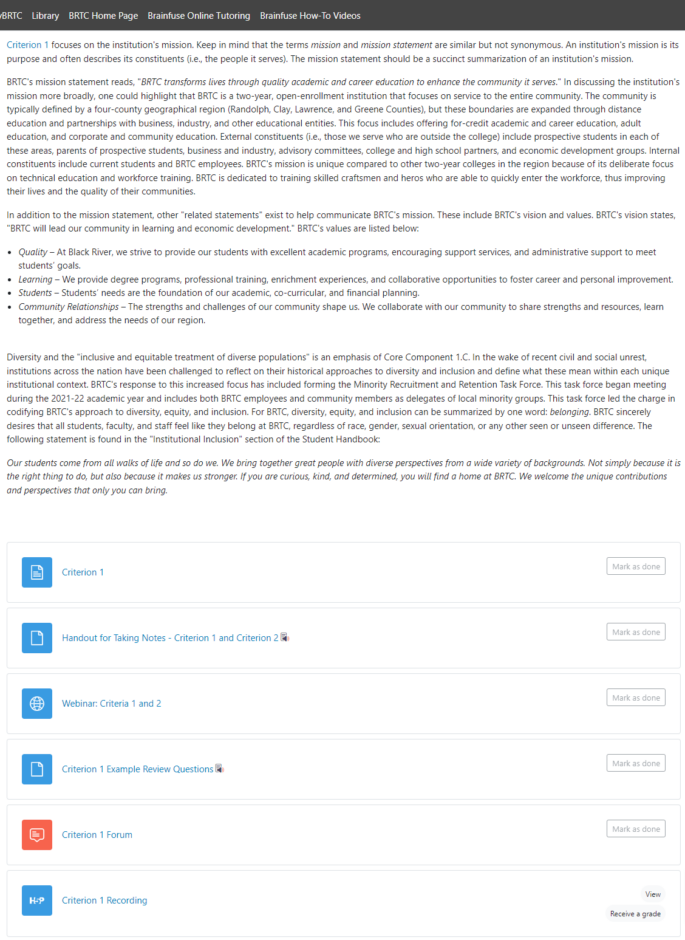

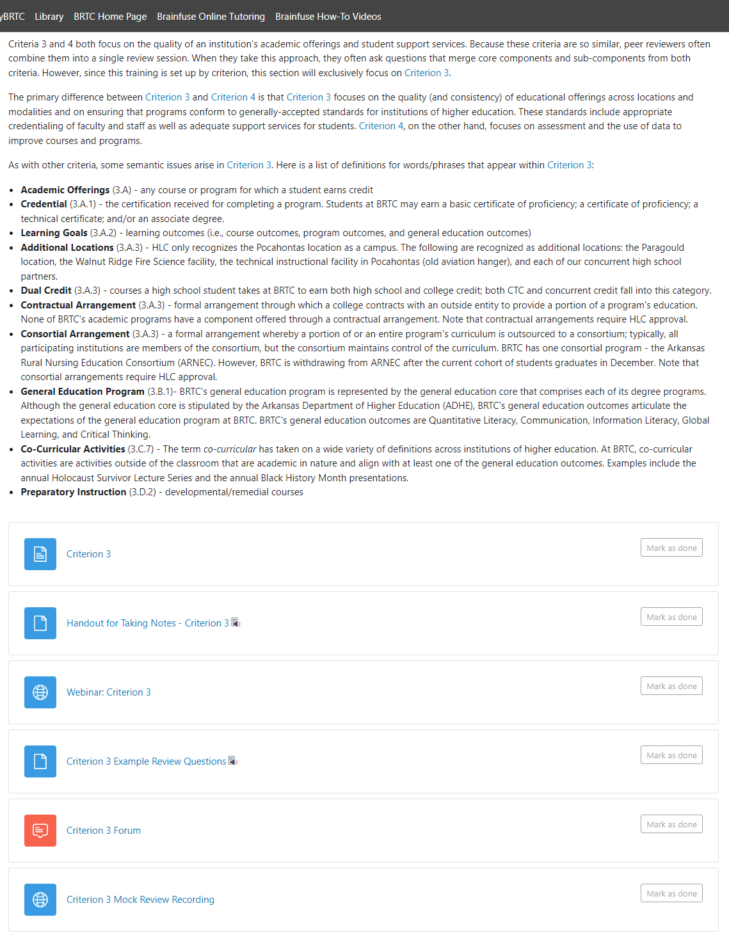
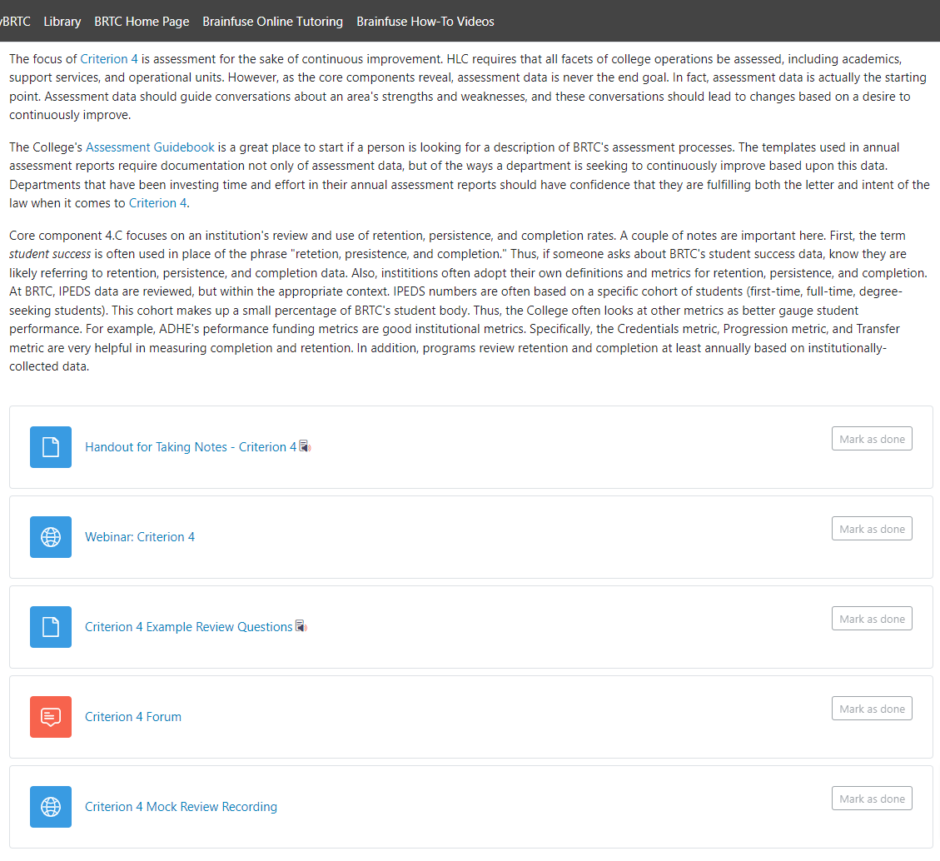
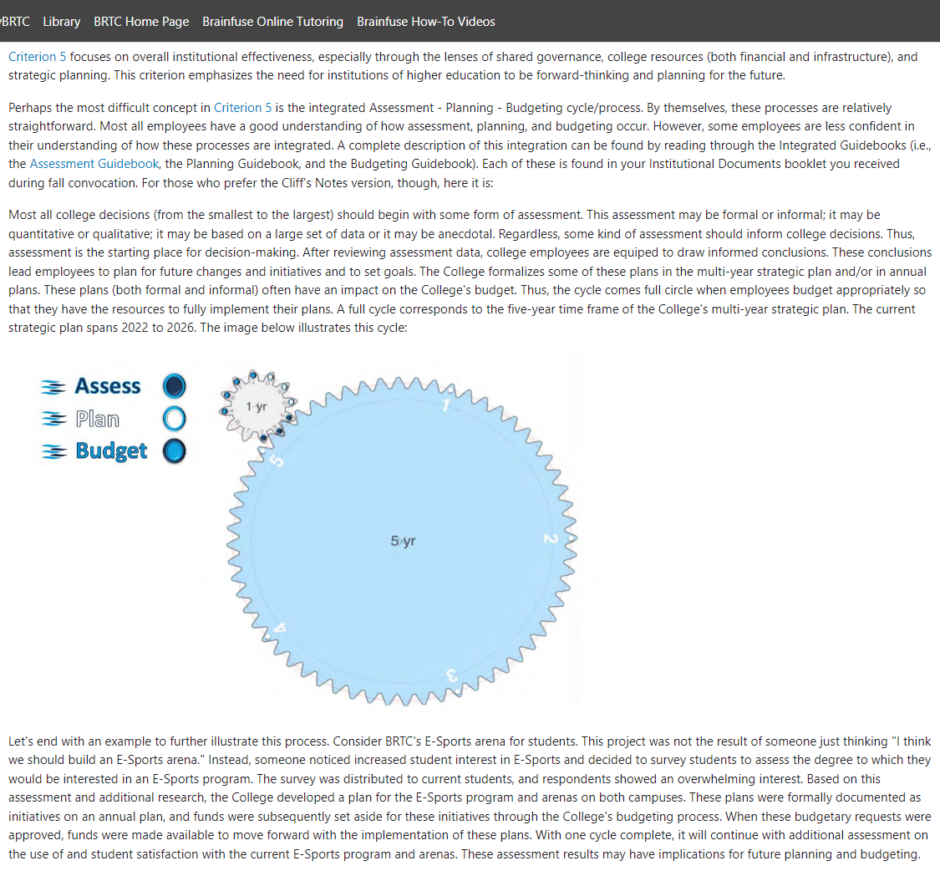
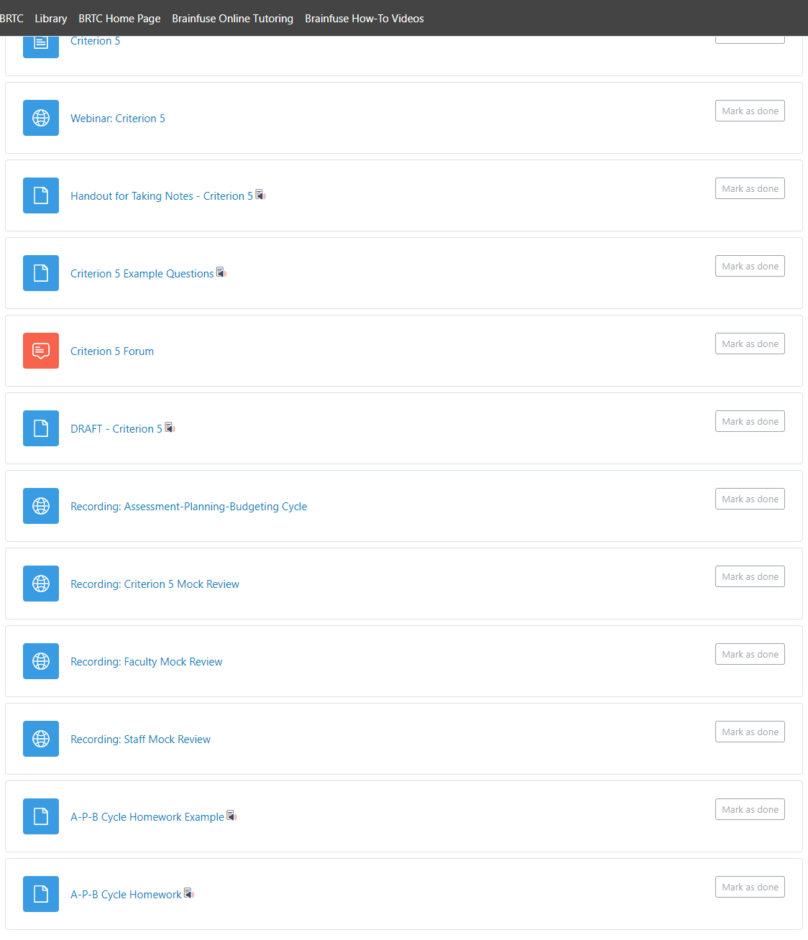
Best Practices for a successful federal compliance review:
- Federal Compliance Team: Create a federal compliance team. Utilize the team approach to divide up necessary task related to federal compliance.
- Meet Regularly: Have your federal compliance team meet regularly to discuss deadlines, updates, changes and challenges team members are facing. (Remember to keep minutes to document your efforts)
- Review Documentation: Ensure all necessary documentation related to federal compliance is organized, up-to-date, and easily accessible.
- Stay Informed: Keep abreast of any updates or changes in federal regulations pertaining to higher education compliance.
- Conduct Mock Audits: Perform internal audits to identify any areas of non-compliance and address them proactively.
- Train Staff: Provide training sessions for staff members involved in federal compliance to ensure they understand their roles and responsibilities.
- Maintain Communication: Foster open communication channels with relevant stakeholders to address any compliance issues or concerns promptly.
- Adhere to Deadlines: Meet all deadlines for submitting required reports and documentation to regulatory agencies. (Create a master deadline spreadsheet and review it in federal compliance committee meetings)
- Document Everything: Maintain thorough documentation of compliance efforts, including policies, procedures, and evidence of implementation.
- Engage in Continuous Improvement: Continuously assess and improve compliance processes to ensure ongoing adherence to federal regulations.
- Seek Guidance: Reach out to experts or consultants for guidance on complex compliance issues or areas of uncertainty. Resources could include state or federal agencies, general counsel, attorney generals office, or peer institutions.
- Remain Transparent: Be transparent in all interactions with accrediting bodies and regulatory agencies, providing accurate and timely information as required.
- Address Findings Promptly: Address any findings or recommendations from previous compliance reviews promptly and thoroughly.
- Stay Proactive: Anticipate potential compliance challenges and take proactive measures to mitigate risks and ensure ongoing compliance.
- Engage with Peers: Learn from the experiences of peer institutions and share best practices for federal compliance within the higher education community.
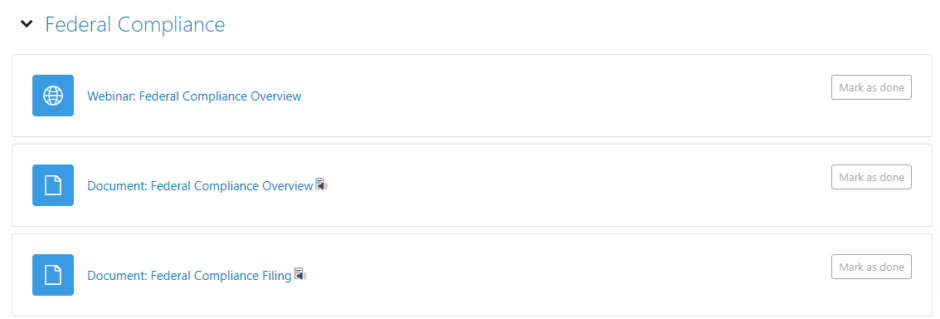
Properly executed, mock reviews can be a very effective means of preparing for an HLC review. Mock reviews can occur in a number of formats. Examples include the following:
- In-person, spanning two days
- In-person, spanning one day
- Virtually, based on criterion
- Virtually, based on audience
In general, in-person mock reviews that span at least one full day are the most effective. However, the success of a mock review is also contingent upon the following:
- A knowledgeable and prepared mock review team of 3-5 members from other institutions
- Availability of the Assurance Argument prior to the mock review
- A review institution truly receptive to feedback
- Proper timing – Not too early, not too late
Note: Internal mock reviews can also be very beneficial, especially as a precursor to an external mock review.
BRTC created the following resources to assist in review preparation:
- Best Practices & Navigating Open Forums Handout
- Criterion 1 and 2 Notes
- Criterion 1 Example Review Questions
- Criterion 2 Example Review Questions
- Criterion 3 Notes
- Criterion 3 Mock Questions
- Criterion 4 Notes
- Criterion 4 Example Review Questions
- Criterion 5
- Criterion 5 Example Questions
- Criterion 5 Homework
- Criterion 5 Homework Example
Additional resources to consider sharing with faculty and staff:
- Important institutional documents (e.g., most recent strategic planning documents, guidebooks/handbooks, polices and procedures manuals, etc.)
- Recordings of trainings/mock reviews
- HLC resources (e.g., criterion webinar recordings and guidance documents)